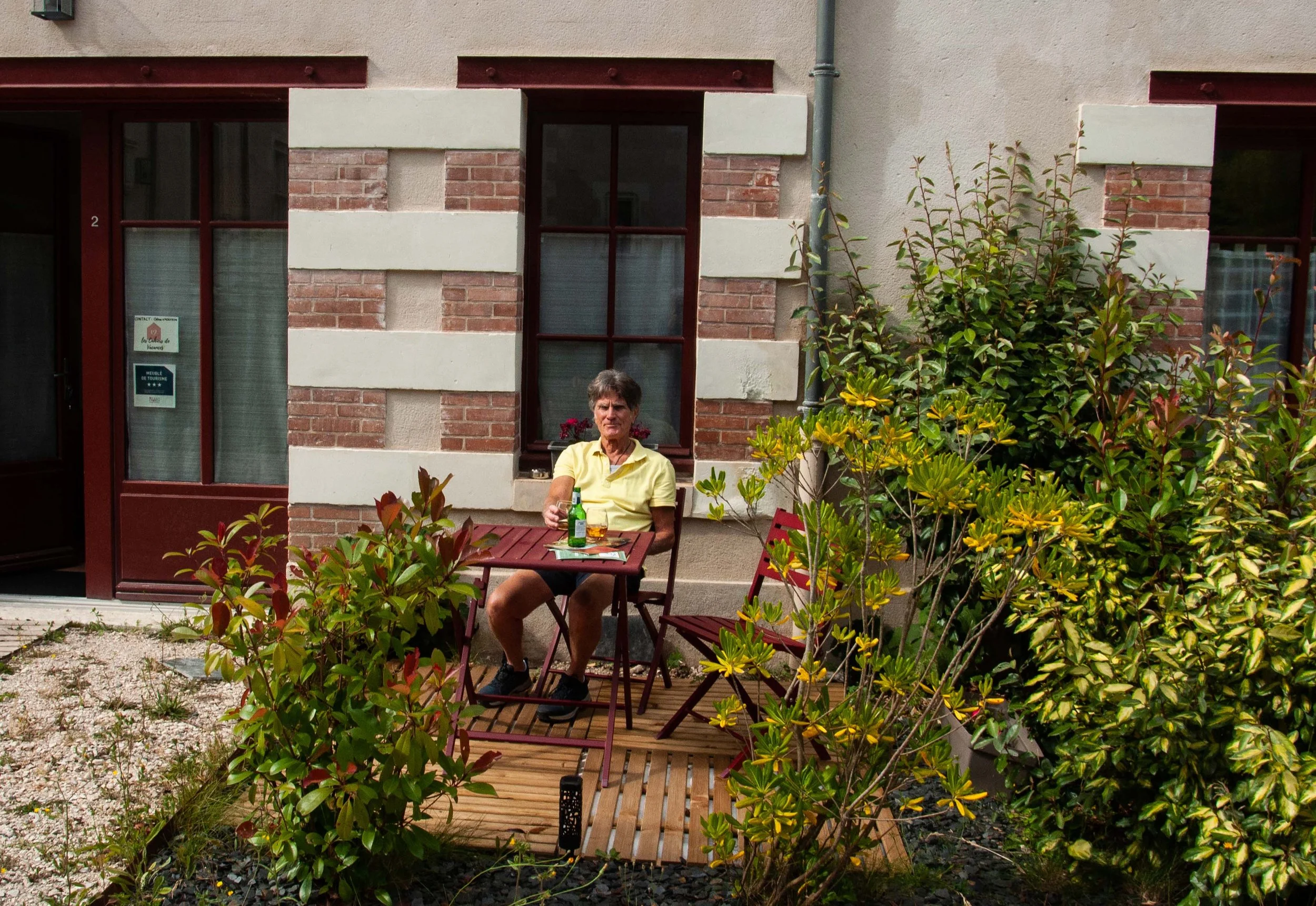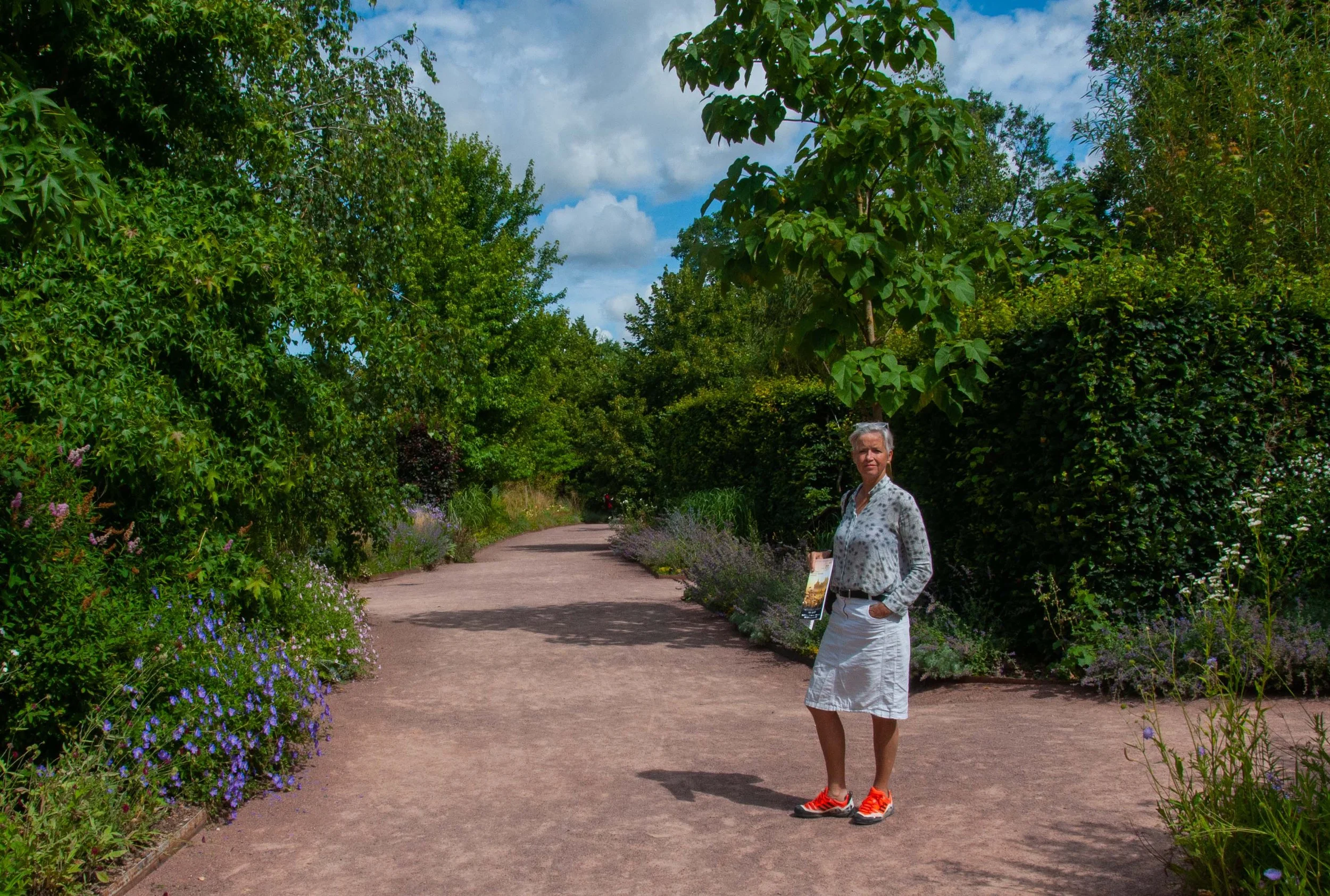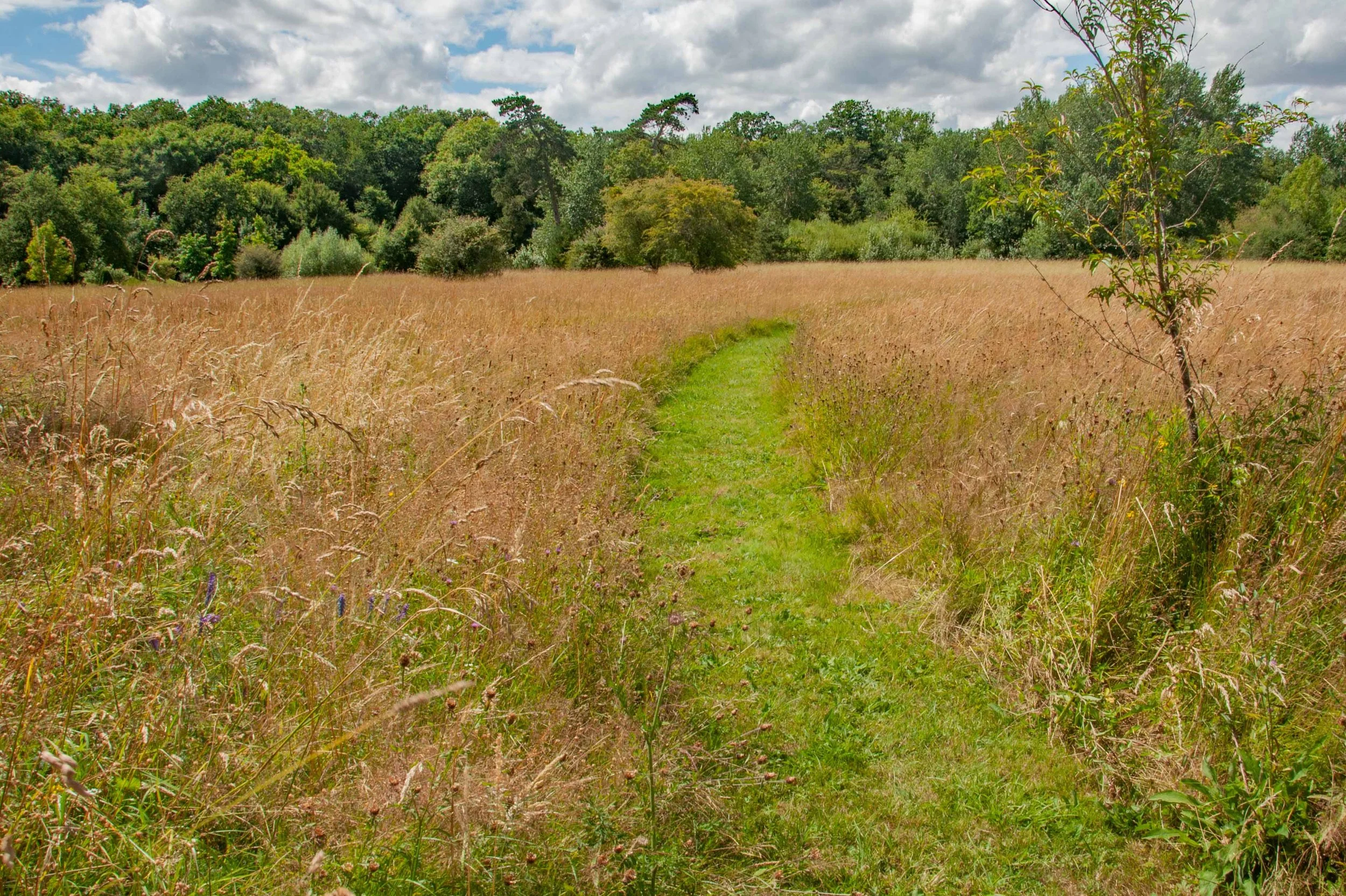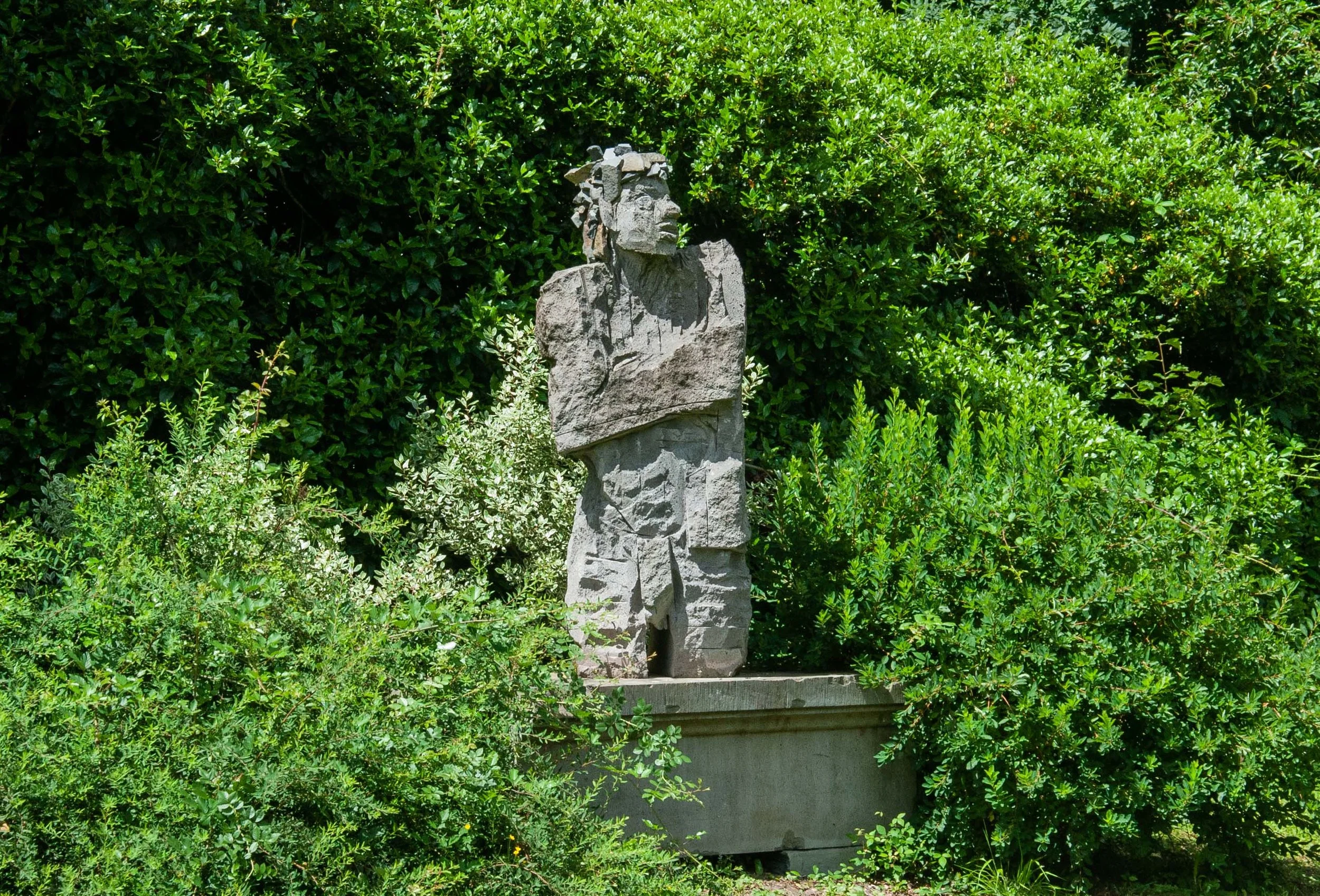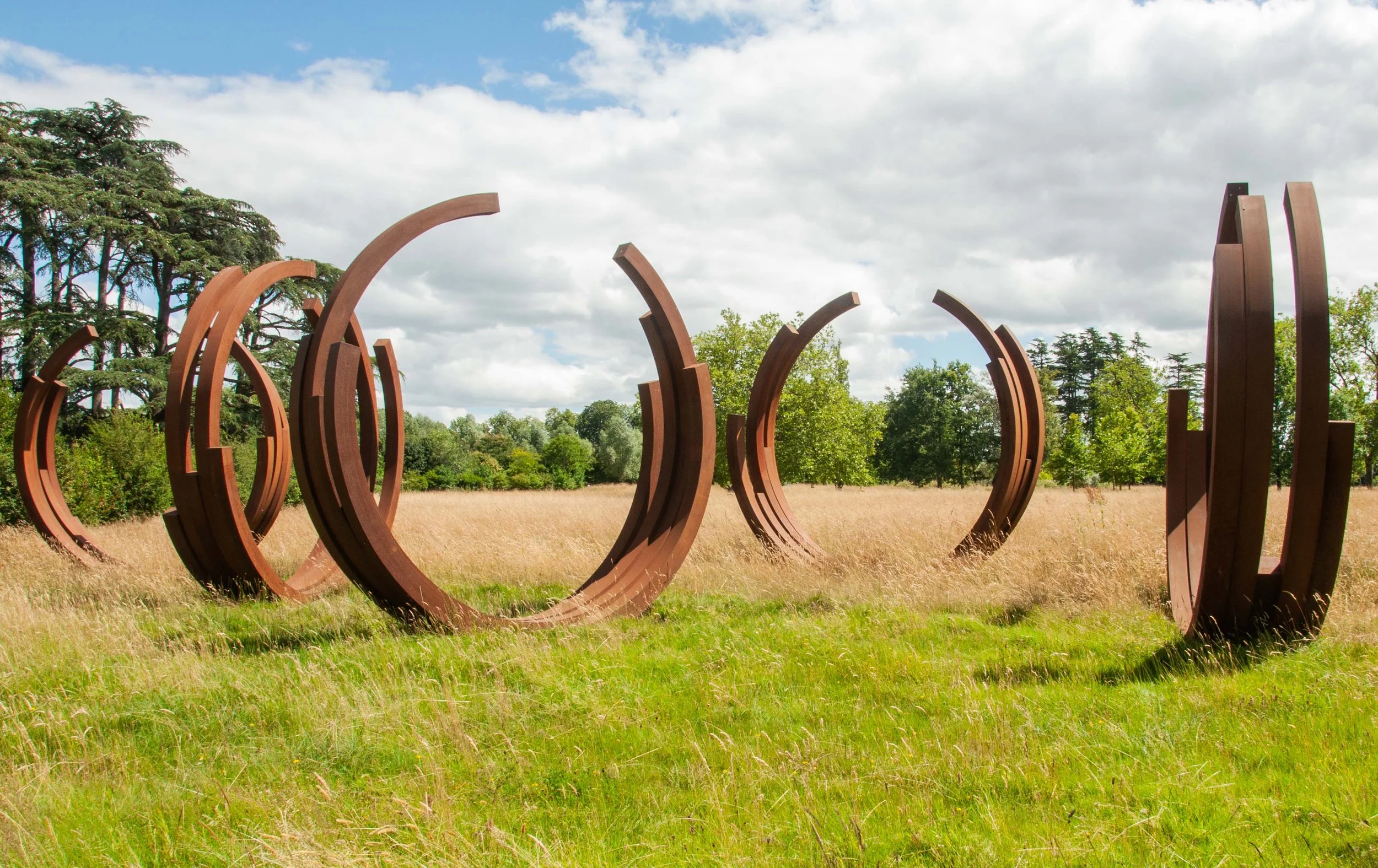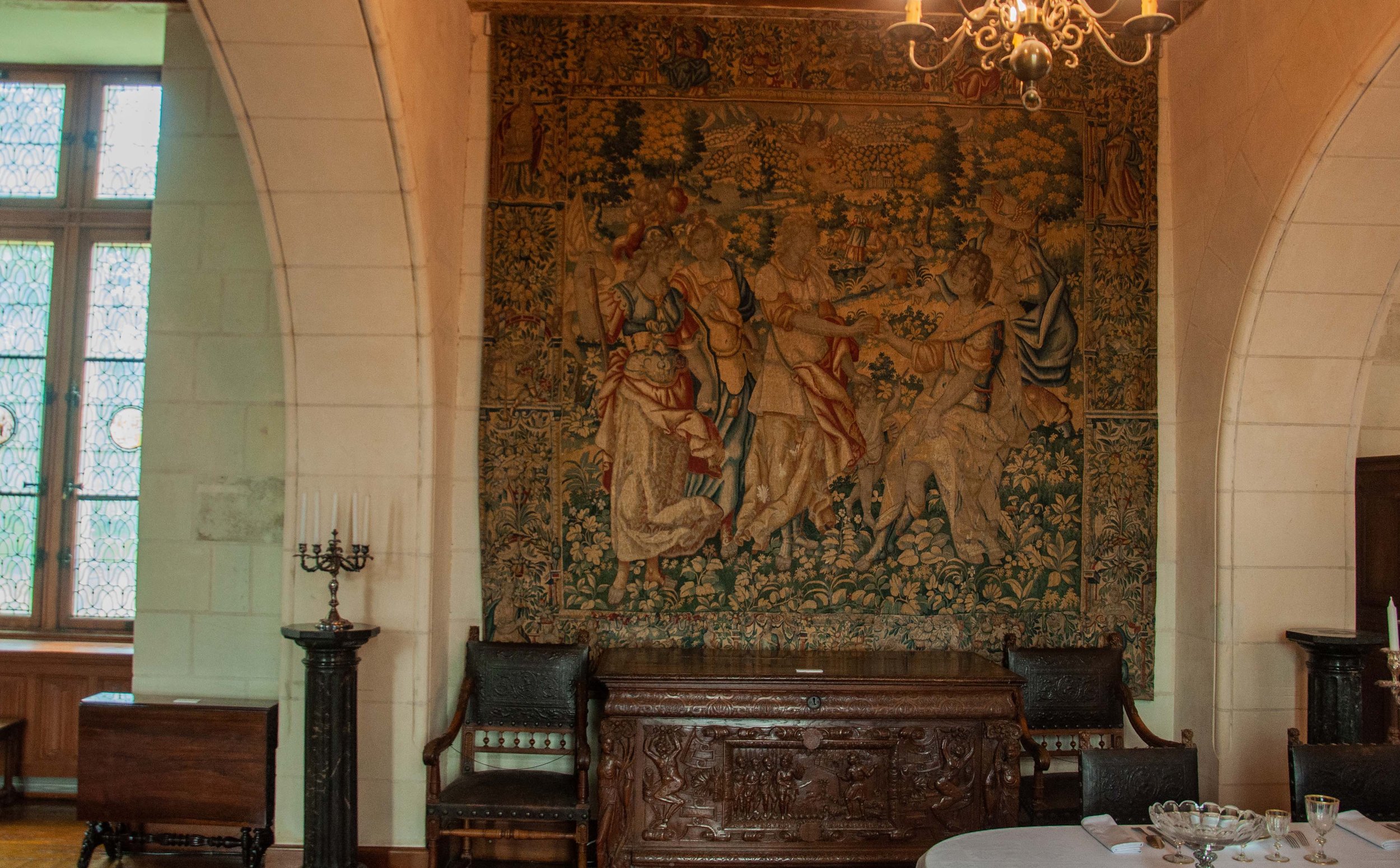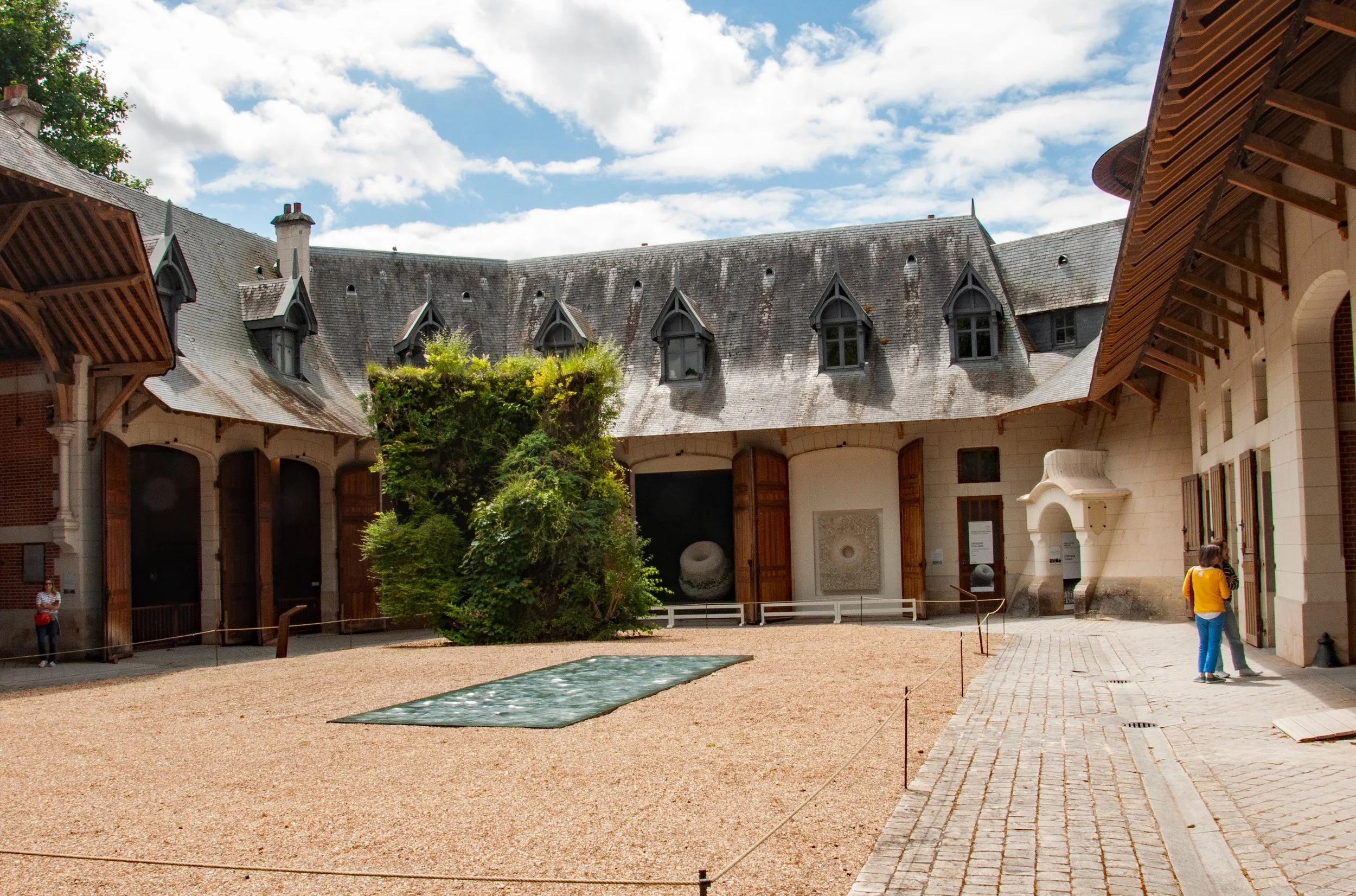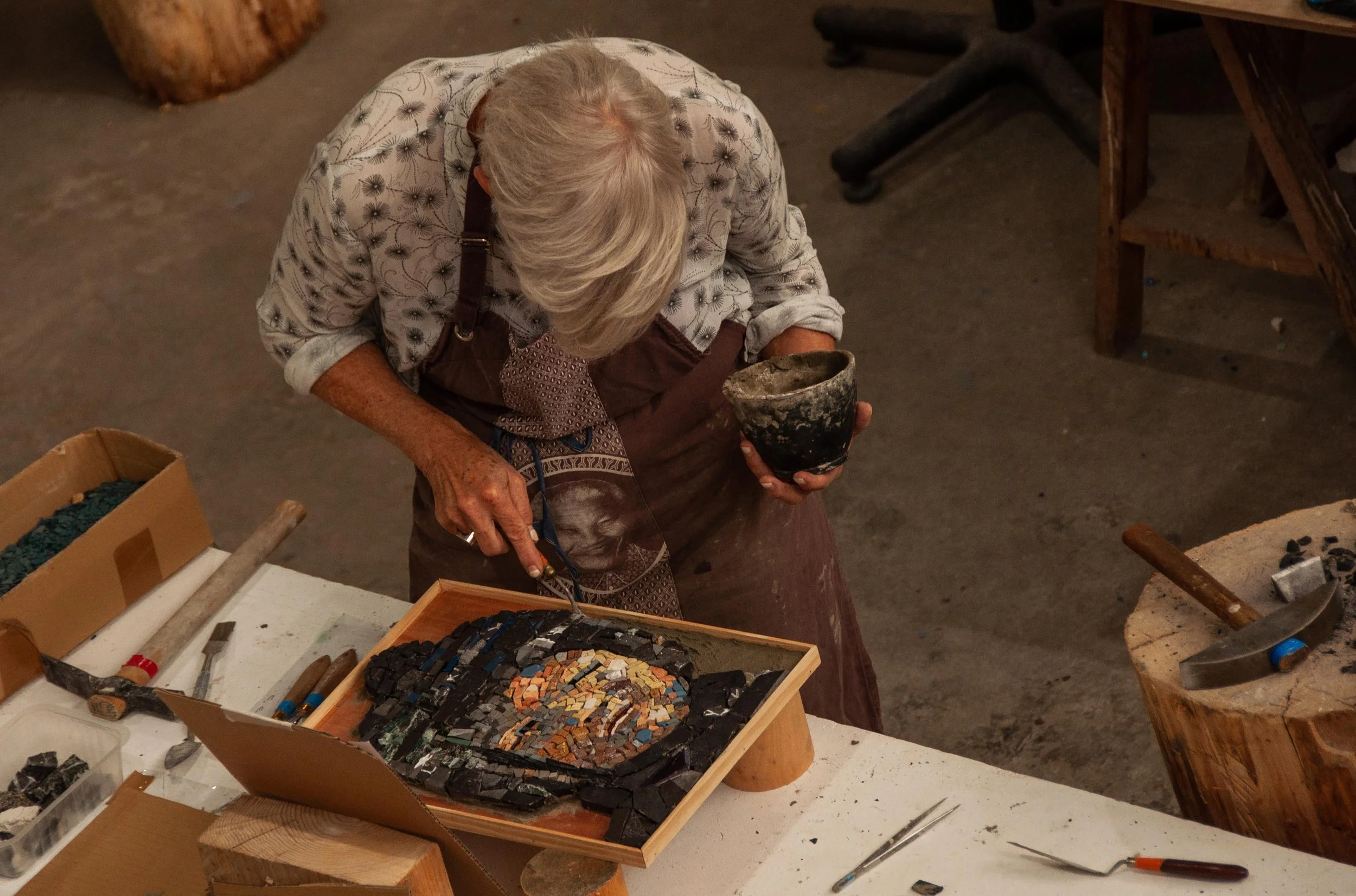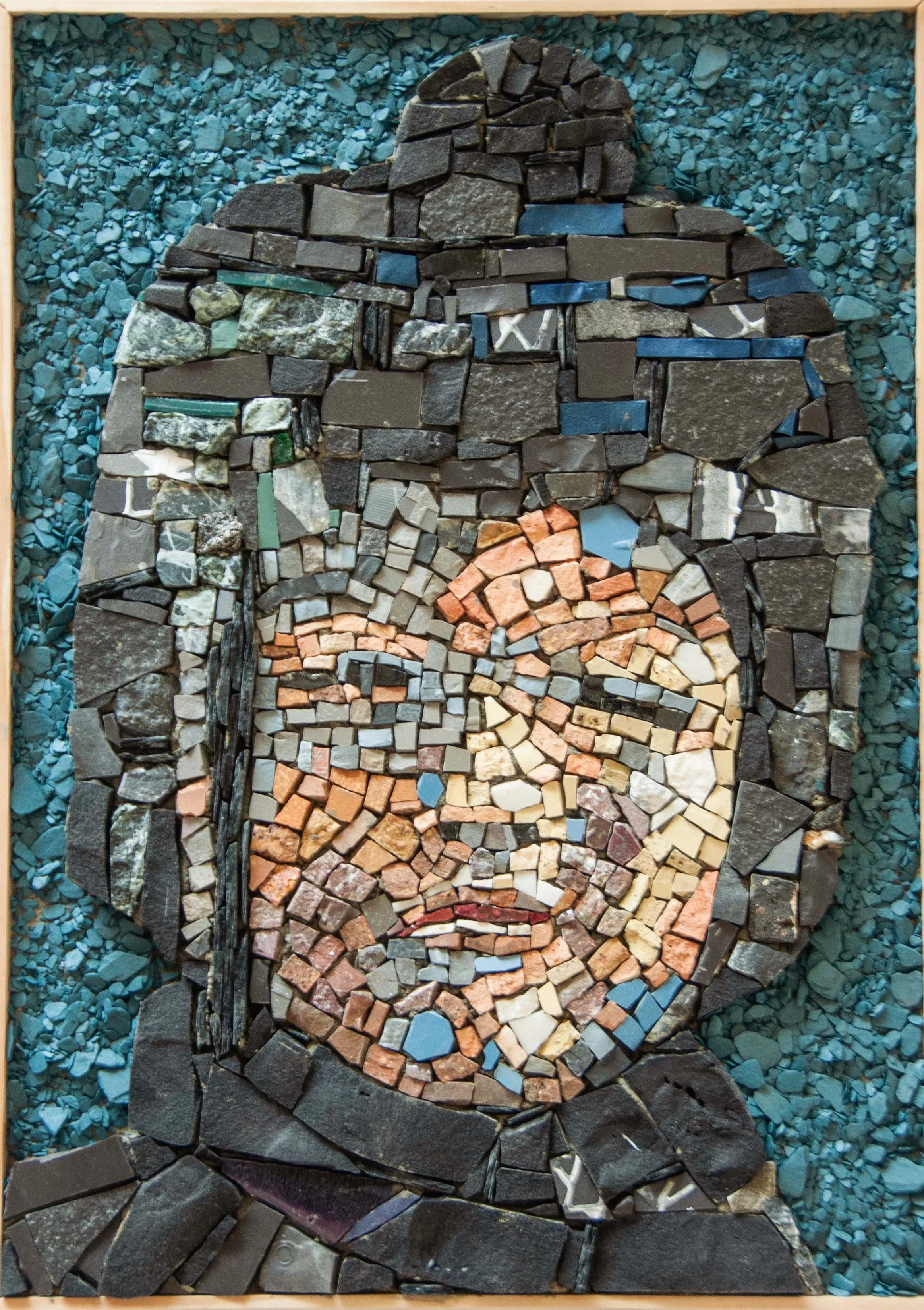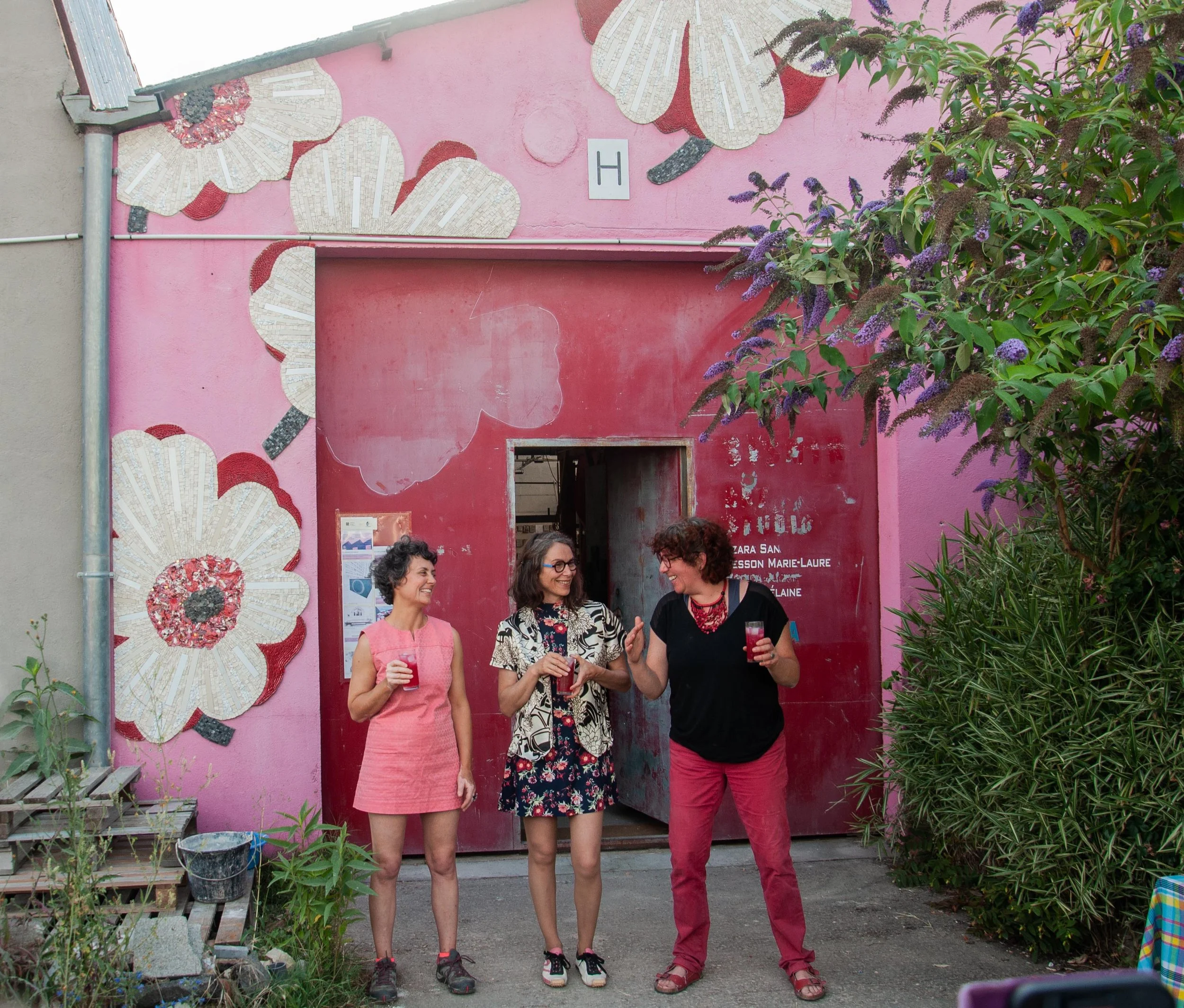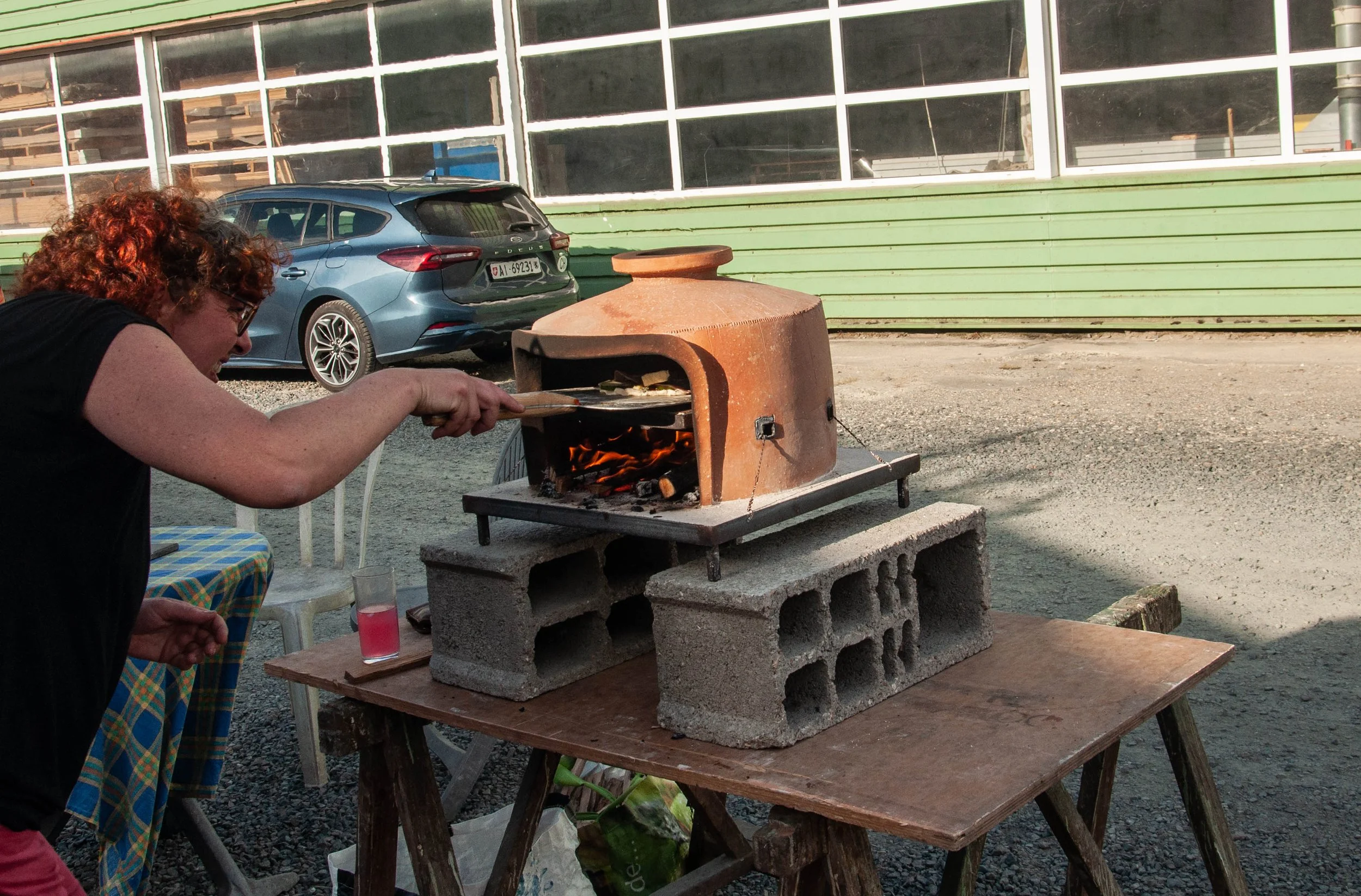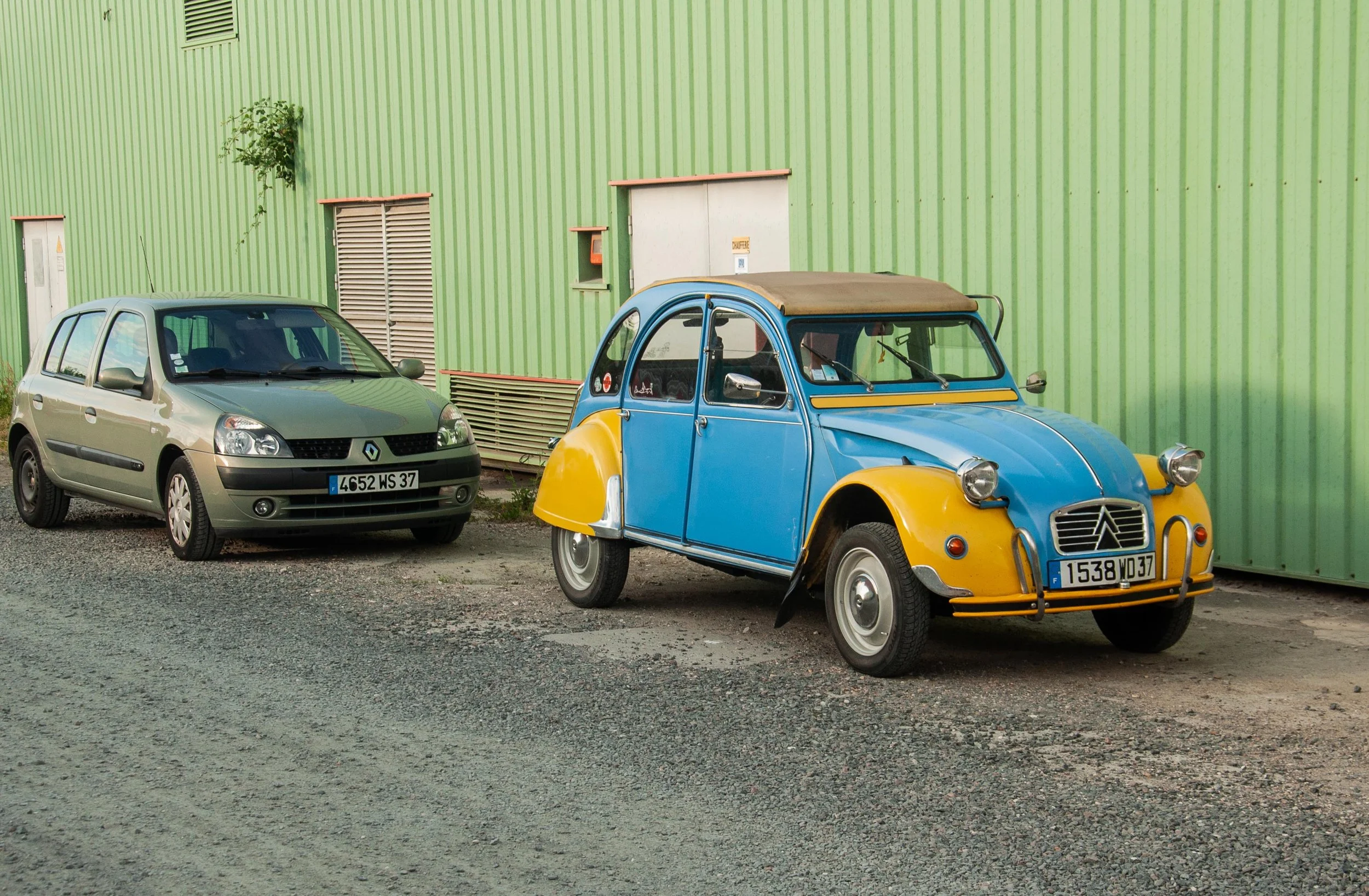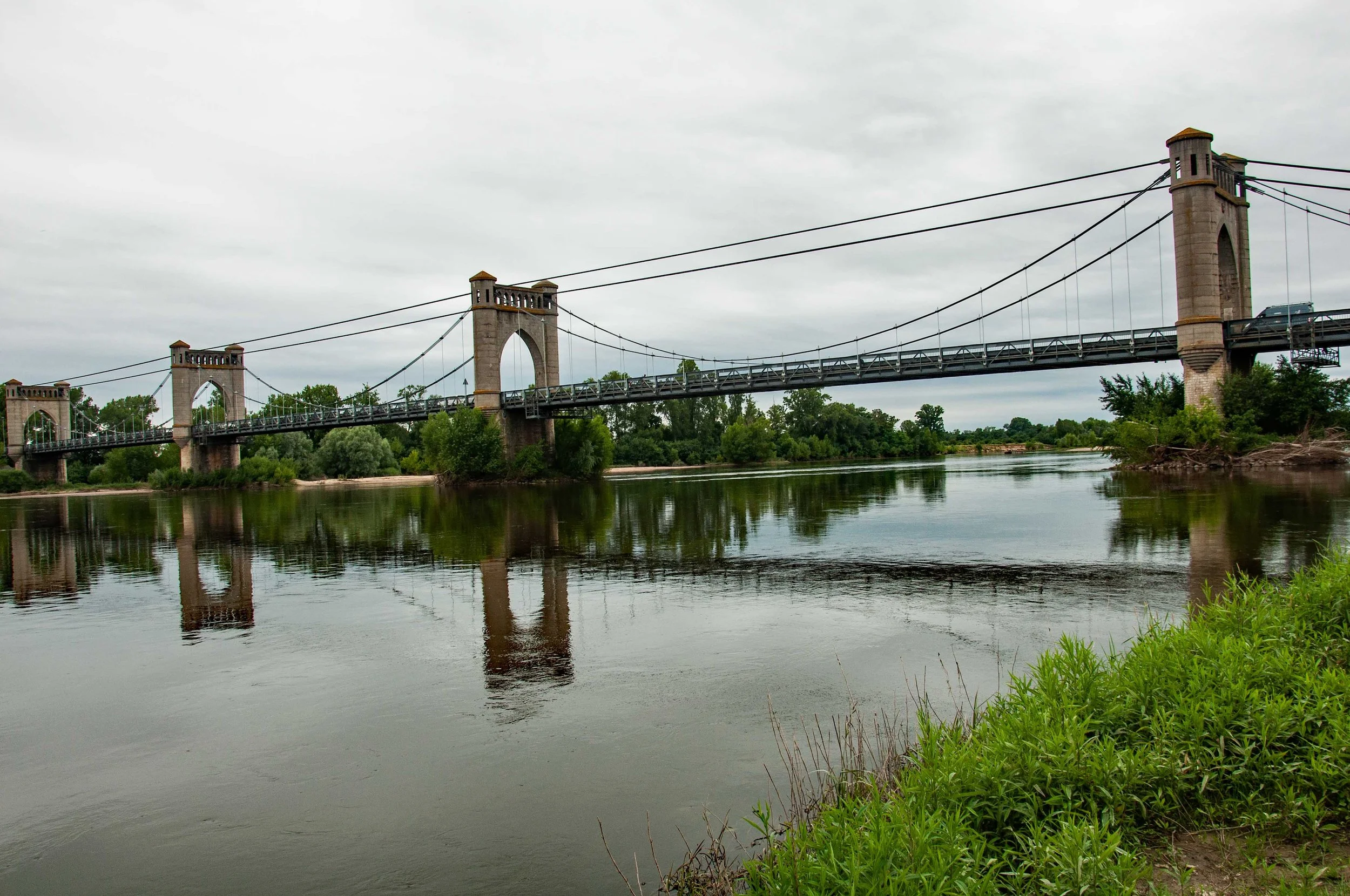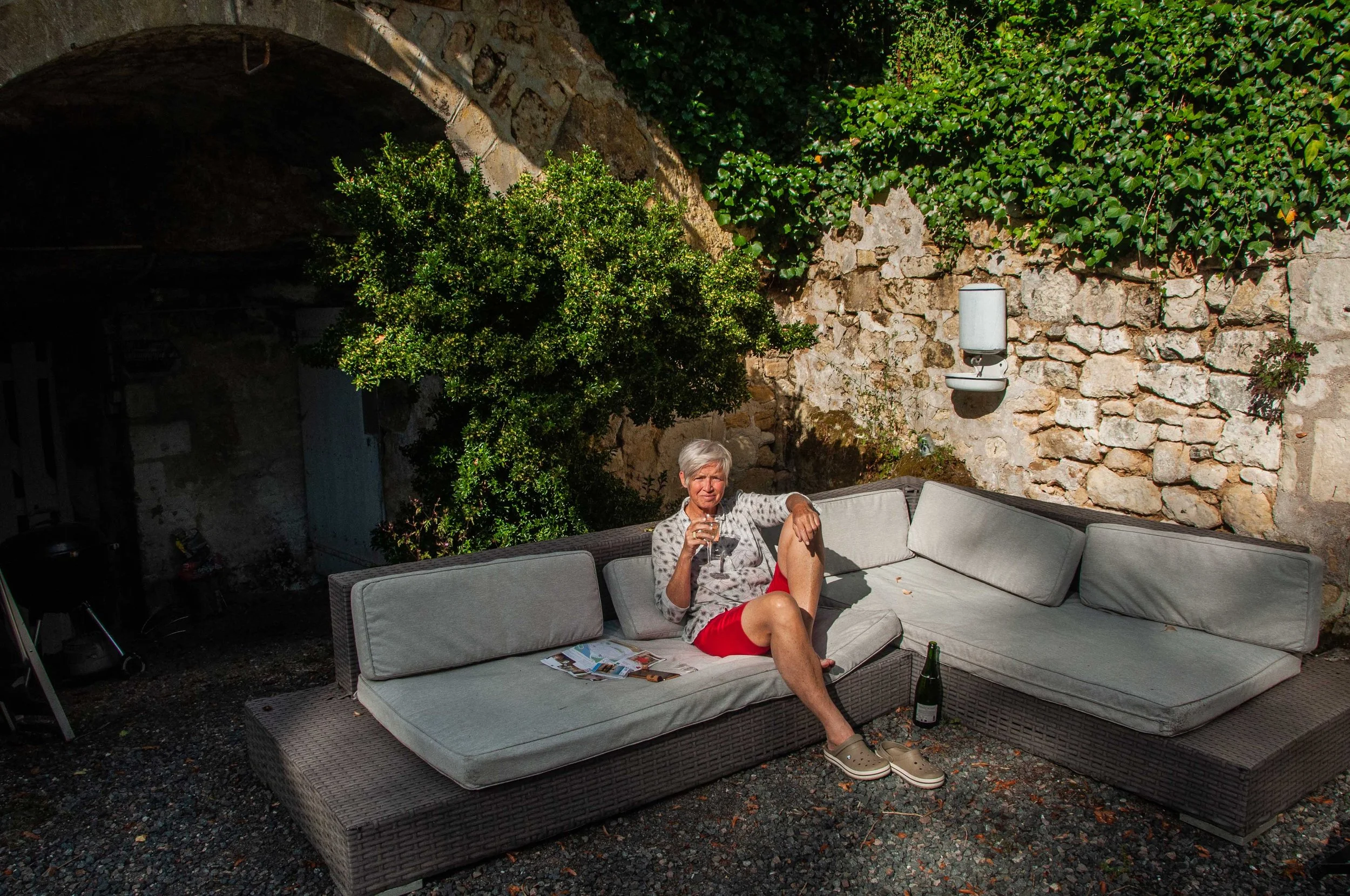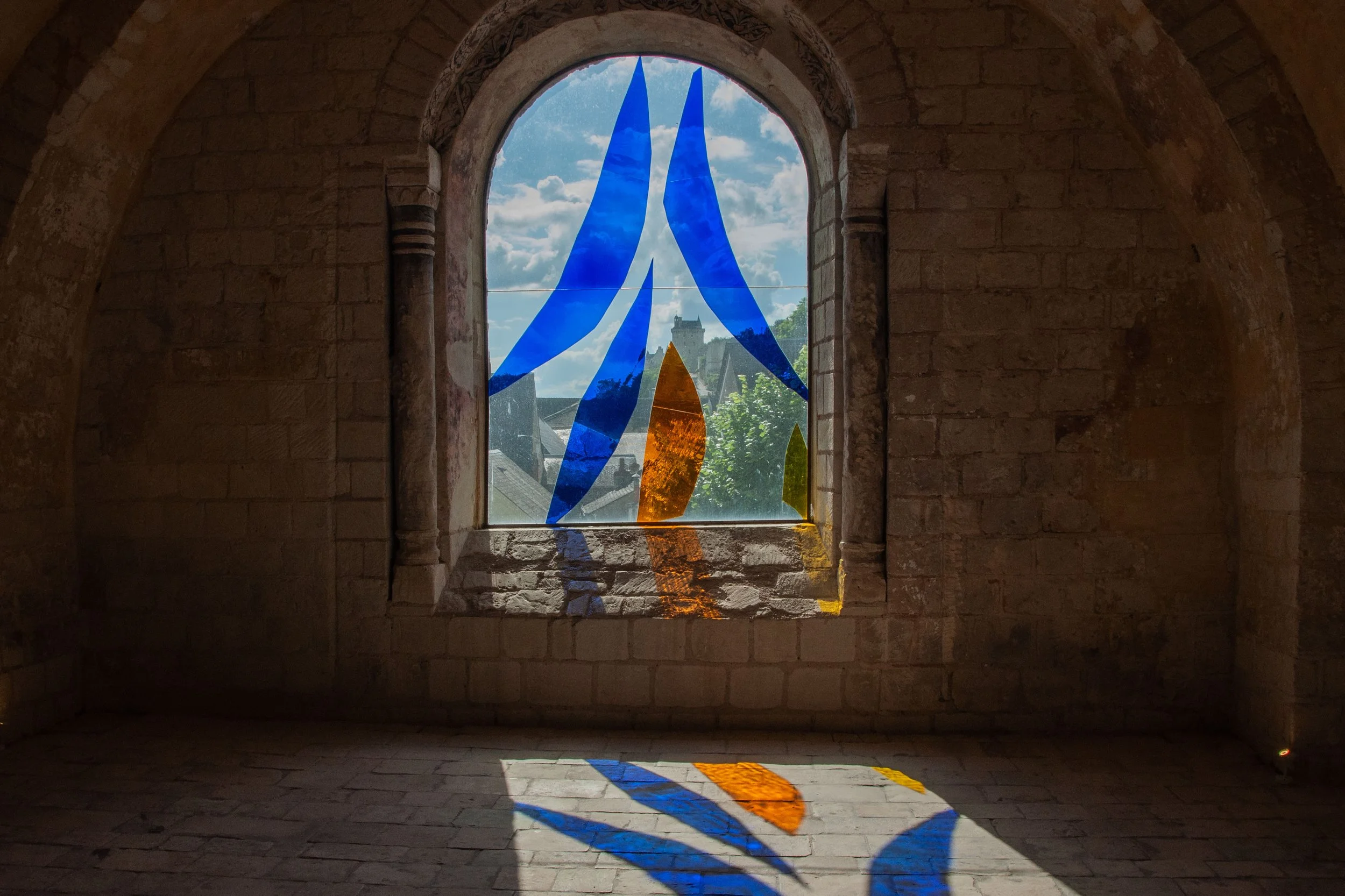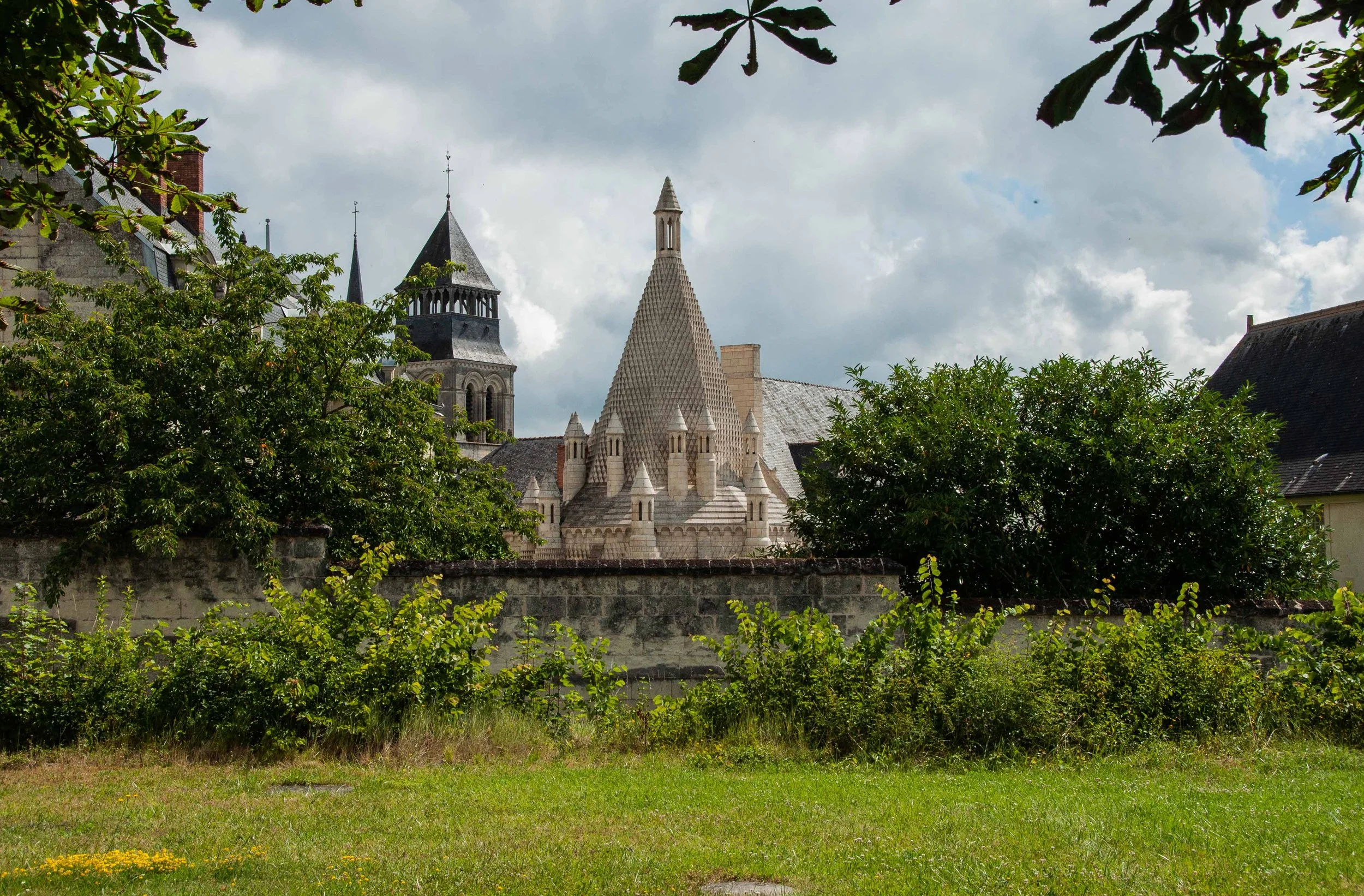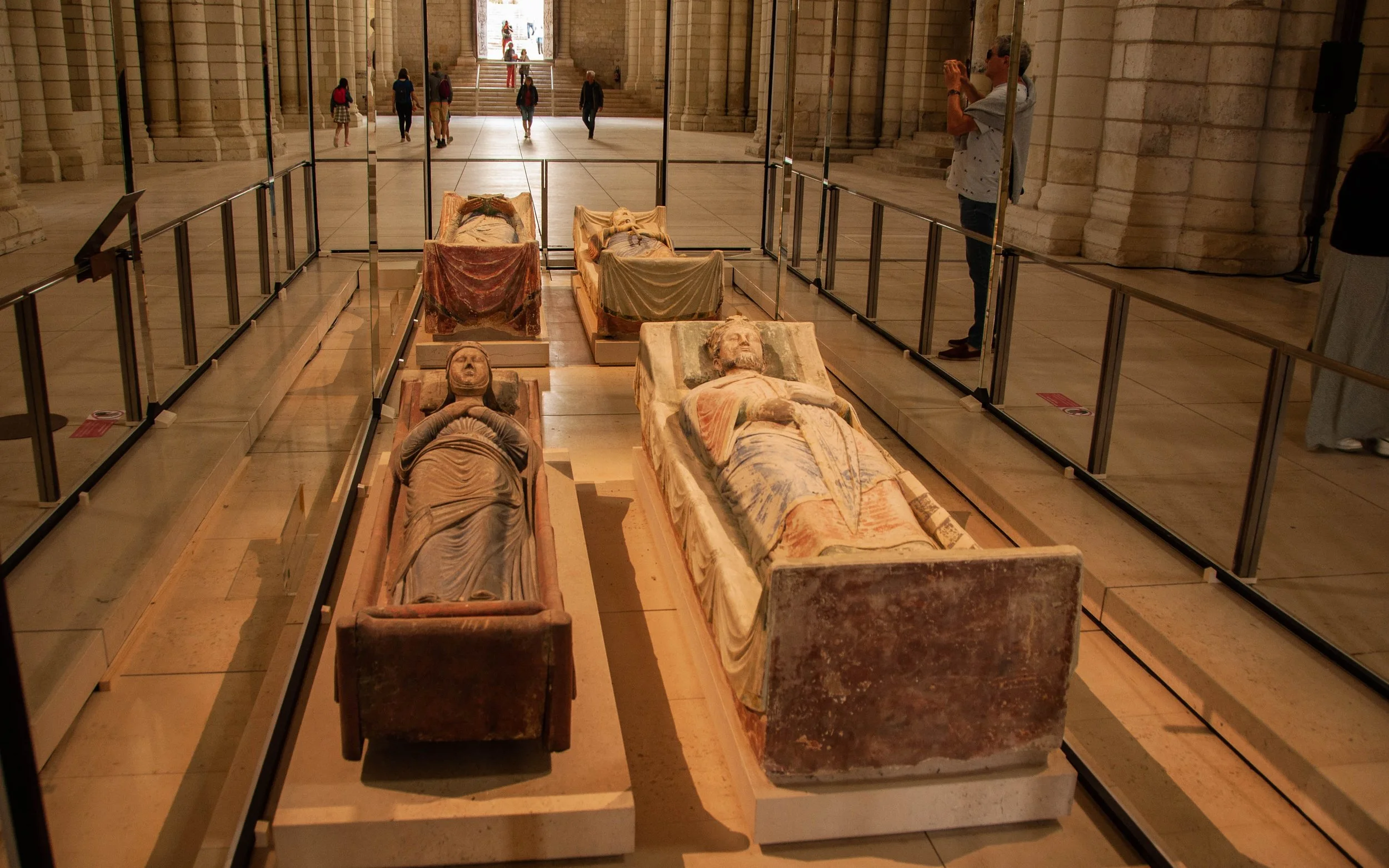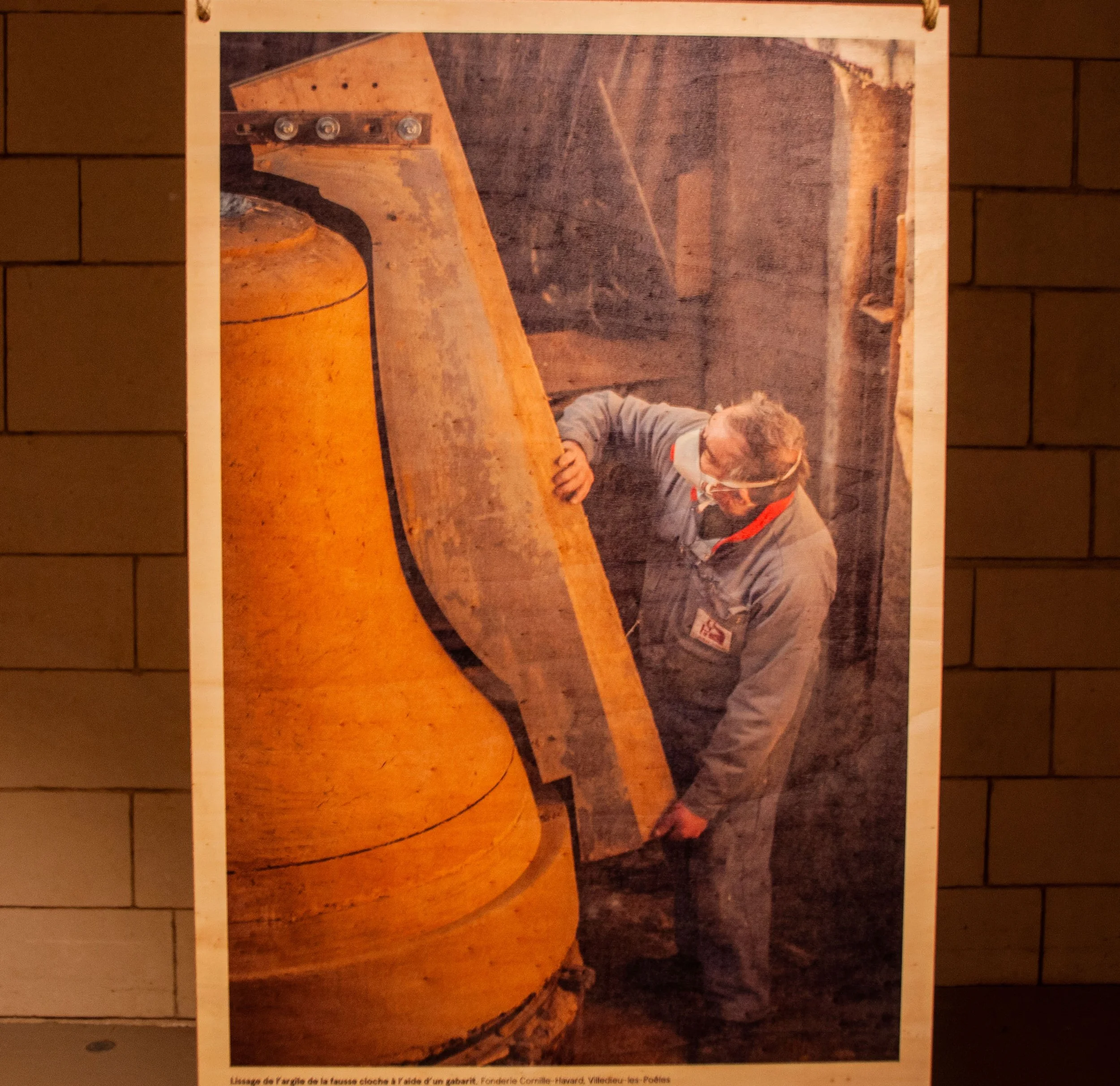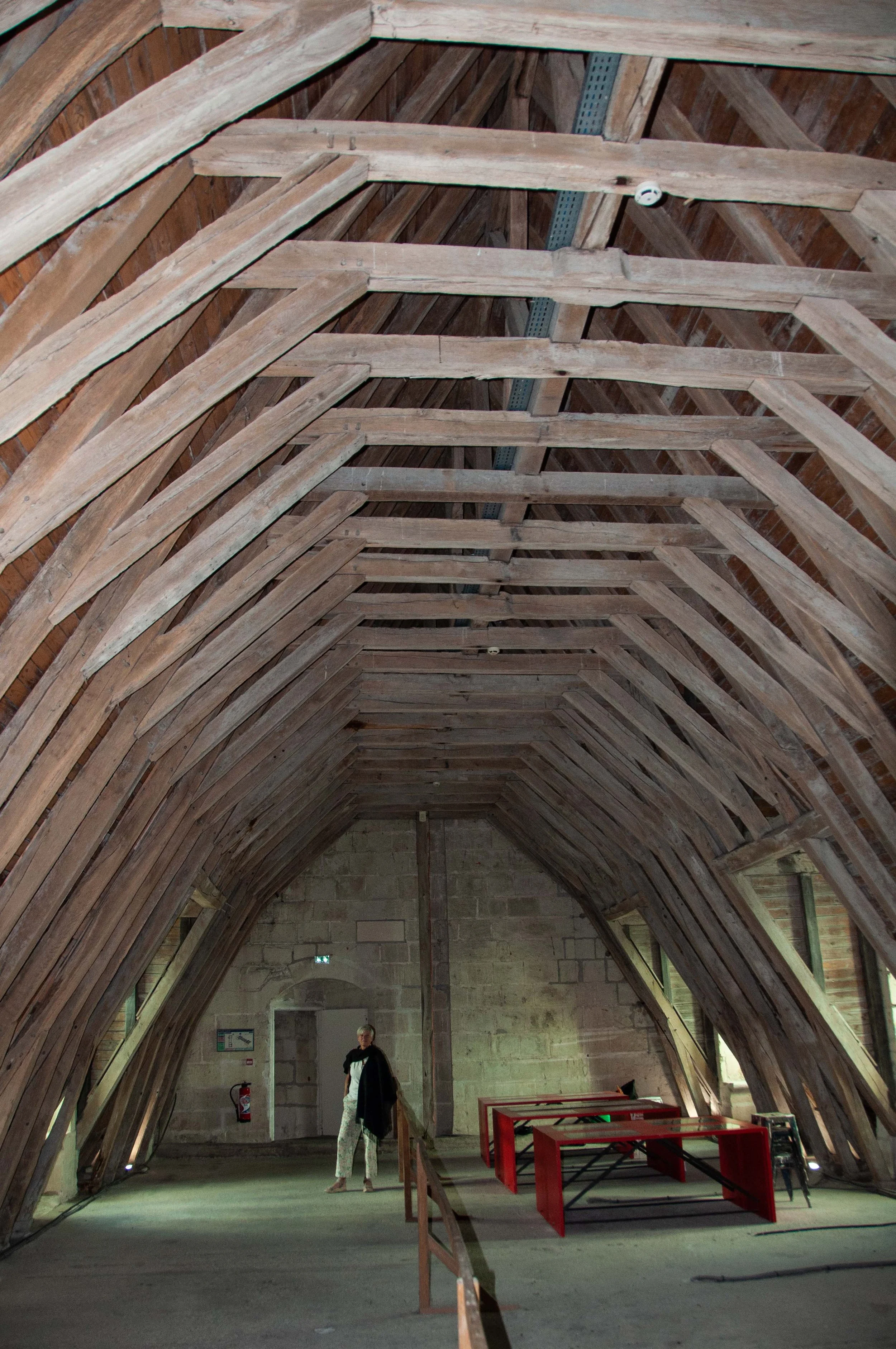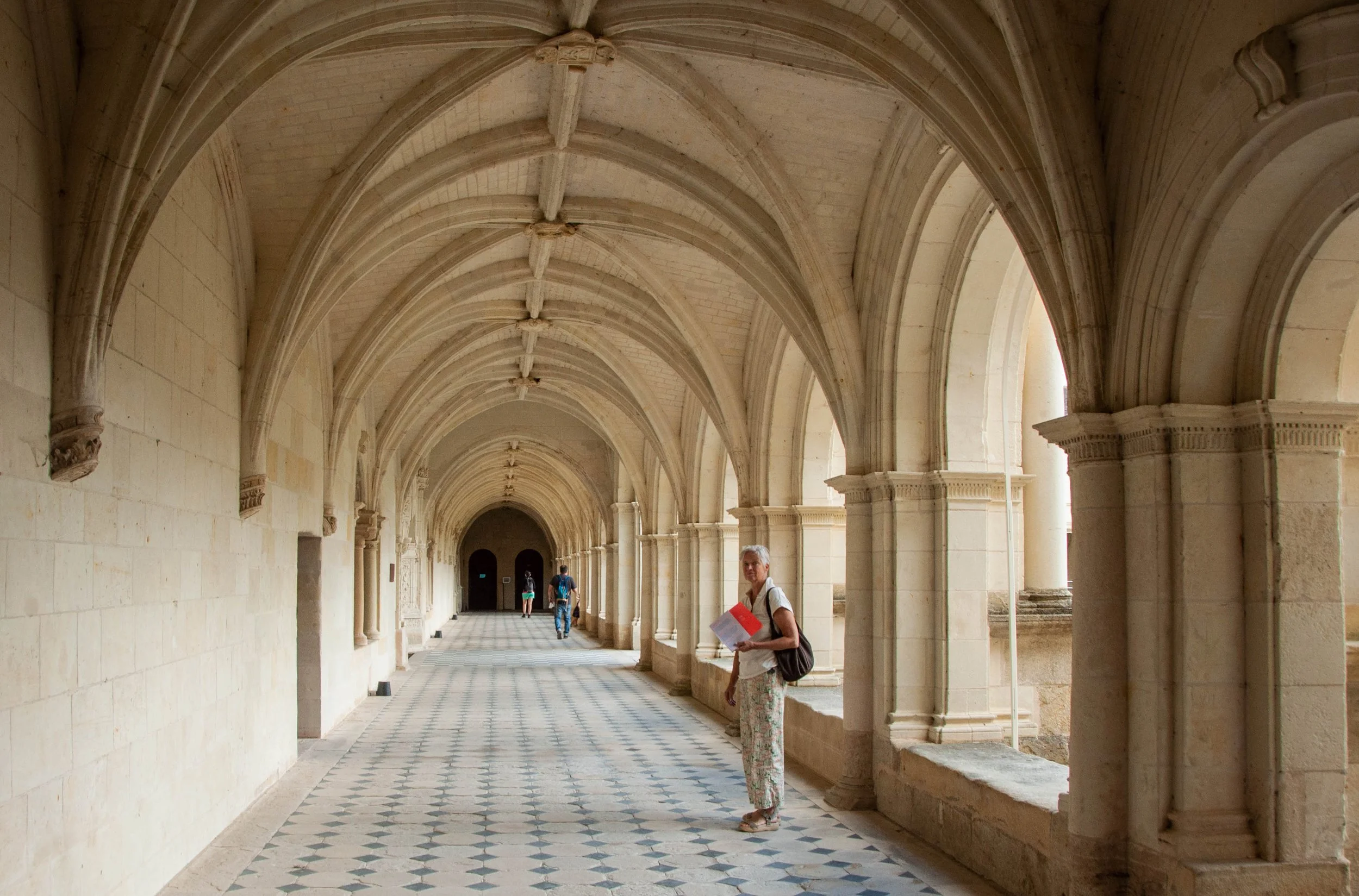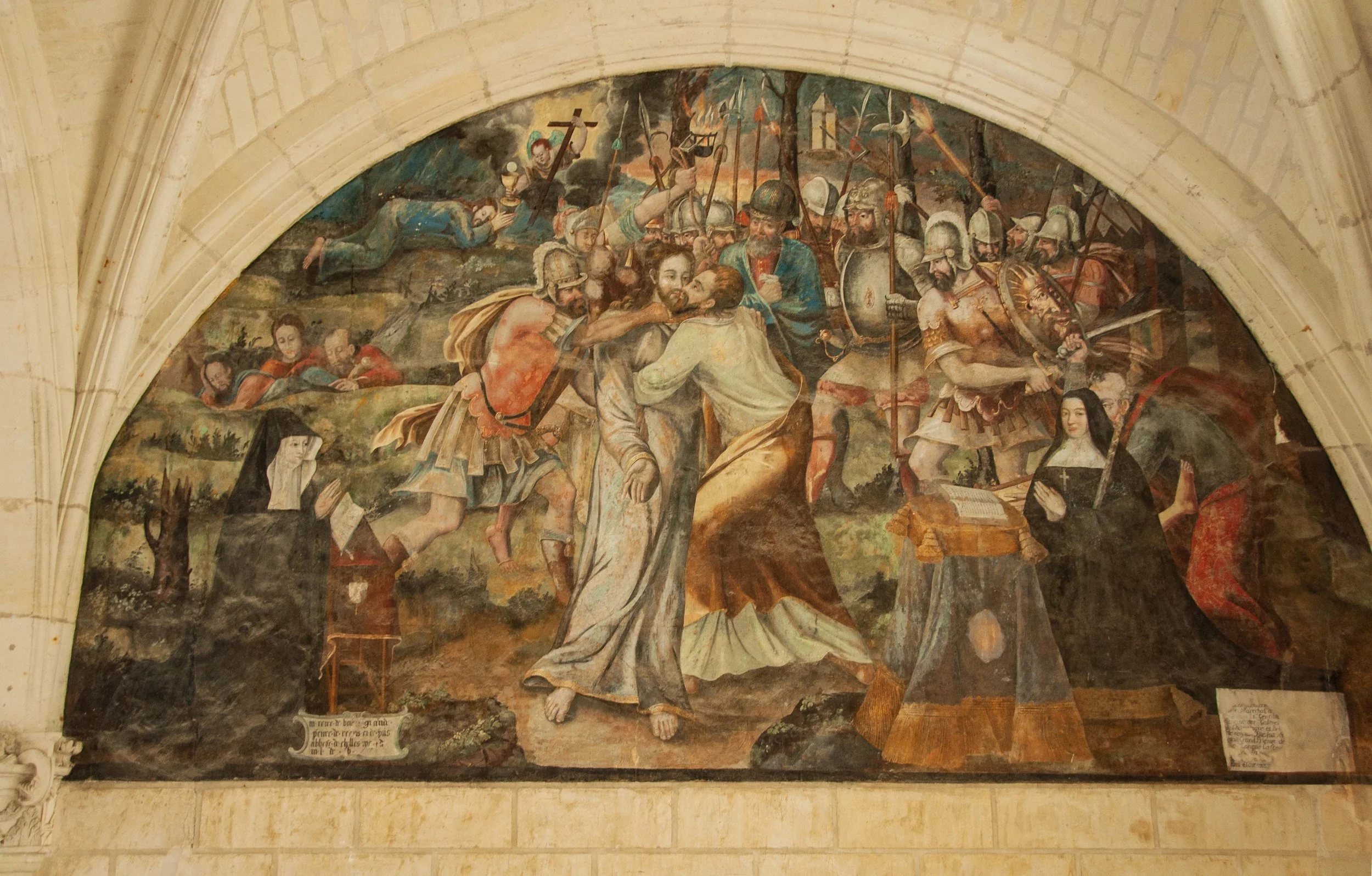Ursula enrolled in a mosaic workshop to be held in the second week of July in the town of Tours, in the Loire valley in France, and we took the opportunity to have a short break and visit a couple of the chateaus and castles in the area. We hired a car and set off at 8am on Saturday, July 6, from home -overloaded as usual.
The drive down was quite tiring, a couple of torrential downpours made conditions difficult in patches. Despite this we made the 750 km in a little less than 9 hours and several stops for coffee.
Photo 1. Recovering in Amboise with a good, cold beer at the end of a long drive.
That evening we relaxed at a bistro in the town, called l’ Atelier, with a bottle of crisp white wine and what, in the UK, would have been called a cheese board, but here was so much more; pâté, cheeses, olives, cold meats and good bread.
We were intrigued by the idea of the International Garden Festival, the Life-Source Garden, at the Château Chaumont-sur-Loire - not far from Amboise. The Château has a long and illustrious history: the first castle on the site was built in the 10th century, but demolished after a failed rebellion against the king in 1465. It was then rebuilt and became the property of Catherine Medici in 1550. The château has had a number of owners over the centuries and in 1938 it was donated to the French government and is now a museum.
Photo 2. Château Chaumont-sur-Loire through the trees
The château, whose name means “bald hill” is set on the high bank of the Loire. Giving a spectacular view over the river.
We were totally unprepared for what we discovered when we got there. It really is an amazing combination of gardens, nature, art and history, all seamlessly melded together. We wandered along the garden paths, seemingly laid out at random but in reality ingeniously interlinked. In total, according to the guide leaflet, there are 25 gardens separated by hedges and joined by meandering paths, so I am not sure if we saw all of them – we didn’t count.
Photo 4. Tall hedges line the formal paths through the gardens….
Photo 5. … but there are numerous less formal paths leading off the grassland and woodland walks.
The gardens were just stunning. In the end we spent about five hours exploring the gardens and then the chateau, and marvelling at the imagination and concept behind it all.
Photo 6. There were water gardens…
Photo 7. And woodland surprises, “L’homme sauvage” by Denis Monfleur
Photo 8. Filigree installations “Chemins croisés” by Lionel Sabatte
Photo 9. Grasslands, untitled by Bernar Venet
Photo 10. and repurposed river barges from the Loire, “Cire perdue” by el Anatsui
And much, much, more. We can only give you the briefest of introductions here. We are not sure how many sculptures there are in the grounds, but in the region of 40 and maybe more.
And then there are the 25 festival gardens themselves. Imaginatively laid out and encompassing a wide variety of form and habitat, including a tropical greenhouse. And, of course, the complex variety of such a garden makes it a haven for insects and birds.
Photo 11. One layout we thought might find favour with some of our family was what we termed “The Pink Garden.”
From the gardens we went to explore the castle, an imposing building of turrets overlooking the Loire and entered via a drawbridge. We are not sure if this last is still on operation.
Photo 12. The entrance to the château Chaumont-sur-Loire across the drawbridge.
The castle is built with a light-coloured stone, almost white, with beautiful spiralling staircases and grand rooms with huge fireplaces. I could have stood upright in. And here there was more art, both old and modern.
Photo 13. A spiral staircases with one of the modern pieces, this by Sheila Hicks
The chateau is also known for its tapestries. These are big, covering whole walls with detailed representations of biblical scenes and events in history.
Photo 14. One of the many beautiful tapestries
From the castle we made our way to the converted stables. Don’t think of your common or garden stables you might see anywhere. These are luxurious brass and wood-panelled structures.
Photo 15. The stable yard, the stables arranged around the perimeter
There are sculptures and installations in the stables, the tack rooms ands other rooms around the yard.
Photo 16. A room of 5000 quartz poppies, “Le nid des murmures” by Stephane Guiran
Photo 17. “L’ultime metamorphose de Thétis”. An amazing piece reminding us of a sea anemone, but made of thousands of tiny amphora by Gregoire Scalabre
Photo 18. Close up of the miniature amphora
Photo 19. “Le Locataire”, by Gloria Friedmann
The whole visit to the “Domain of Chaumont-sur-Loire” was wonderful. We didn’t see more than half of the installations and sculptures, but we left almost overwhelmed by the experience. We had planned to go to another chateau that day, but we spent so long there that we abandoned that idea, and drove on to Tours where Ursula was to attend the mosaic workshop, starting the next day, on Monday.
Photo 20. The workshops, the mosaic workshop is the pink one on the left with the large mosaic flower on it.
The workshops are another example of the focus on the arts we found in the Loire valley. There are at least 80 workshops in these converted industrial buildings, with probably, more than 100 people working there as some share studios. There are musicians, photographers, a stage and film set designer, sculptors, painters, ceramicists, and the mosaic studio where the workshop was held. It really is an exciting place, a warren of artistic activity.
Photo 21. A birds eye view of the workshop.
Ursula was learning a new technique using a sharp-edged hammer and a wedge shaped metal anvil to produce the pieces needed for her mosaic.
Photo 22. The technique, using the hammer and wedge.
These pieces then had to be fitted together, jigsaw like, to produce the finished portrait.
Photo 23. Working on the portrait
Ursula’s project was one of the most difficult. It is also one of the hardest to photograph as it is difficult to bring out the relief and textures in the mosaic.
Photo 24. The finished portrait
The trainers organised a pizza evening during the week, officially to celebrate the completion of the flower mosaic that decorates the front of their workshop. The work had been a collaboration with their friends and all had been invited to celebrate with pizza and cocktails.
Photo 25. The three mosaicists whose workshop this is. Marie-Laure on the left, and Melaine on the right who held the workshop, and a colleague in the centre.
We were impressed with their pizza oven. It can easily be set up on a veranda, or almost anywhere, and being wood-fired, it bakes extremely well.
Photo 26. The pizza oven at work.
One of the guests arrived in a perfectly maintained 2CV or Deux-Chevaux
Photo 27. An immaculate deux-chevaux.
During the week, while the workshop was in progress I amused myself exploring along the banks of the Loire. The back walls of the workshop complex bore a number of beautifully executed graffiti portraits.
Photo 28. One of the many portraits.
Photo 29. A restored traditional barge on the river
Photo 30. The Loire is crossed by many historic bridges, mostly stone, like this one down-river from Tours.
Photo 31. The gothic Cathédrale Saint-Gatien in Tours
I also spent time photographing birds in the garden of the B&B where we were staying.
Photo 32. A Jay flying in the garden. There was a family of four of them foraging in the vegetable beds
At the end of the workshop we loaded our possessions, left Tours and travelled downstream to the town of Chinon, our next stop, where we stayed Friday and Saturday nights.
Photo 33. Relaxing in Chinon (about 50 km from Tours) after the workshop and drive down.
Everywhere we went in France there were chateaus and churches, many repurposed. In Chinon we visited the Saint Mexme Collegiate Church which was originally built in the 5th century on the site of a monastery founded by Saint Mexme.
Photo 34. A modern stained glass window in the Saint Mexme Collegiate Church
Photo 35. Co-existing with centuries old murals
The church was deconsecrated, like so many churches, at the time of the French revolution and fell into disuse. Today it is undergoing restoration.
The next morning we drove to the town of Montsoreau at the junction of the Loire and Vienne rivers. Here we made a brief visit to the Museum of Modern Art in the Château de Montsoreau. It houses a collection of conceptual art by the art collective “Art and Language”
Photo 36. The Château de Montsoreau, originally built in 1450 and now a modern art museum.
The art collection was very interesting but did not lend itself to photography, so none here, However, those interested can look up “Art and Language” in whatever search engine you use. The building is worth a visit in its own right
Photo 37. Overlooking the junction of the Loire and Vienne
Our main visit of the day was to be the Fontevraud Royal Abbey, founded in 1101 and which has an important English connection. Eleanor of Acquitane who was Queen of France and then Queen of England, chose the abbey for the burial of her husband, Henry 2nd of England and of her son Richard the Lionheart. When she died she was interred there as well.
Photo 38. Approaching the Royal Abbey. The tower in this picture is the roof of the kitchens and the turrets are the chimneys over the cooking areas.
The abbey is enormous, at one time it was the centre of a religious community of 3000, with 700 monks and nuns and an abbess as the head of the community.
Photo 39. The ceiling of the kitchen showing the chimney vents.
Henry 1 and Henry 2 and Queen Eleanor were buried in the abbey, but the tombs were destroyed at the time of the French Revolution. The restoration work has included making effigies to replace those destroyed.
Photo 40. Effigies of Eleanor and Henry 1 & 2 and Richard 1 of England
Fontevraud was an abbey from 1101 until 1792 when it was taken over by the state, on the orders of Napoleon. It was converted to a prison in 1804, and remained a prison for 159 years, until 1963. Since then the abbey has been restored and opened to the public.
Photo 41. A picture of the moulding of the forms for the recasting of the abbey’s bells.
These huge rooms for the community required enormous beams to support the ceilings and roofs.
Photo 42. The impressive array of beams. Makes the Whangerei ceiling look like leggo.
And the wonderful cloisters. The whole complex is so enormous it is difficult to take it all in.
Photo 43.Beautiful, expansive cloisters
Photo 44. And everywhere there are murals depicting religious themes.
There is also another section of the monastery holding a modern art collection, but we felt we could not take in any more. Two days of history and art had left us feeling “chateaued-out”. Too much in too short a time. We returned to our B&B and walked down to Chinon and strolled about the town before retiring to a bistro with outdoor tables and enjoyed wine and food in the shadow of a statue of Rabelais.
The Loire valley really impressed us with the importance given to this melding of art and history. If you ever have the chance to go visit, we can thoroughly recommend it, but do try to give yourselves more time than we allowed for ourselves.
The next day we left early, driving back to Bern and laden with wine and pate and the goat cheeses for which the area is famous. A pleasant drive this time, no rain and stress free.
